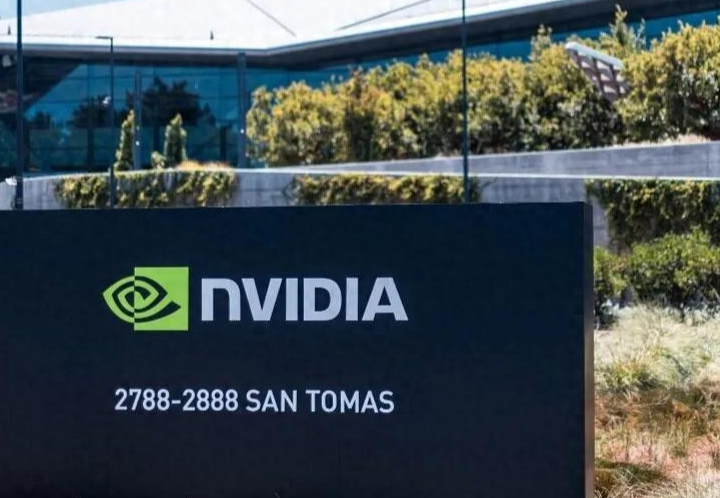NVIDIA H20: A Frenzy in China
Advertisements
In recent years, NVIDIA has emerged as a dominant player in the artificial intelligence (AI) landscape, reaping substantial financial gains from its prowess in graphics processing units (GPUs). With its innovative technology and strategic decision-making, the company has made remarkable strides in AI applications that are widely regarded as pivotal in shaping the future of technologyThe surge in NVIDIA's revenues can be attributed to the skyrocketing demand for AI-capable GPUs, particularly from powerhouses such as the United States, China, and several Middle Eastern nations.
The success of NVIDIA's H20 GPU stands out as a key highlight in this phenomenonThis product has been specifically tailored to meet the growing needs of the Chinese market, following a series of restrictions from the United States that limit the export of more advanced models like the Hopper H100 and H800. In response, NVIDIA developed scaled-down versions, including the H20, L20, and L2, but it is H20 that has resonated most with Chinese customers.
This newer model, built on the Hopper architecture, is particularly advantageous for training AI models
As optimization remains critical in this rapidly changing technological climate, NVIDIA's strategies have sparked significant growth in sales, indicating that the H20 GPU is well-received despite its relatively diminished capabilities compared to its advanced predecessors.
The growing collaboration between NVIDIA and various Chinese firms highlights a broader narrative in which nations are racing to harness advanced AI technologies, reflecting the fierce competition between global economic leaders in this transformative arenaAnalysts have pointed out, for example, that even with reduced specifications, the H20's sales have seen a remarkable 50% growth quarter-over-quarter, significantly outperforming other products within NVIDIA's portfolio.
As of recent assessments, NVIDIA's earnings from the sale of H20 GPUs have contributed billions of dollars to its revenue stream, showcasing the electrifying speed of growth in the global market for AI hardware
- Buffett Ups His Stake!
- The Fed's Path to Resolution in 2025
- This US Stock Soars Over 143%!
- The Bond Market Soars into the New Year
- Deep Divisions in American Interests
An interesting narrative thread emerges from these financial achievements; for instance, while NVIDIA's H100 commercial activities saw a comparatively modest surge of 25%, the H20's success offers a glimpse into the strategic maneuverings necessary to maintain a leading position in an industry characterized by rapid innovation and stringent regulations.
China's extensive AI ambitions stand in stark contrast to the limitations it faces, particularly in terms of hardware availabilityChinese companies are making substantial investments in AI research and development, with firms like Deepseek recently revealing that they trained their state-of-the-art DeepSeek-V3 language model on a staggering collection of 2,048 NVIDIA H800 GPUsThis feat alone required an investment of 2.8 million GPU hours, showcasing the intensity and scale of AI research happening in the region.
The disparity between resource allocation between major players must also be considered
For instance, it was reported that Meta utilized 30.8 million GPU hours to develop its Llama 3 model, which had 405 billion parametersThis reflects a broader trend where AI capacity increasingly defines the competitive edges of organizations within the tech landscape.
As China pursues home-grown solutions, emerging companies like Biren Technologies and Moore Threads may gradually chip away at NVIDIA’s dominance in the Chinese data center marketHowever, the overall market scenario reveals that such a transition is not an overnight development but rather a gradual shift that may unfold over years.
A notable development on the horizon is the anticipated unveiling of NVIDIA’s B300 GPU, which is positioned as the next significant advancement in AI capabilitiesCompeting against existing architectures like B200, this upcoming GPU is expected to deliver a 50% performance increase thanks to enhancements implemented in its design and production processes with TSMC's 4NP technology.
The specifics of performance enhancements offered by B300 over its predecessor are compelling

It promises a significant increase in computational power measured in floating-point operations per second (FLOPS), alongside raised power consumption figures, thereby leading to both greater capabilities and higher operational demandsAdditionally, the B300 GPU is set to bolster memory capacity by an impressive 50%, transitioning from 192GB to a robust 288GB, thus improving operations dependent on high-capacity memory systems.
Attention to detail in architecture design, including distribution dynamics between CPUs and GPUs, sets the stage for an impressive future performanceConsequently, the implications for AI training and inference, particularly with complex models like OpenAI's iterations, are substantial.
As the competitive landscape begins to embrace newer architectures, the distinction between NVIDIA's H100 and the forthcoming H200 illustrates the benefits tied to performance improvements and advancements in memory speed and capabilities
Heightened bandwidth performance alone has been reported to deliver a substantial increase in interaction efficiency, estimated at a surprising 43%. This is indicative of how advancements in technology will not only enhance operational metrics but also translate into considerable cost savings for AI service operators.
The differential performance benefits may encourage organizations to partake in the latest hardwareIndeed, the reduction in operational costs by threefold serves as a major incentive for adopting advanced GPUsSuch significant performance jumps coupled with economic feasibility promises to redefine user experiences, enhancing client willingness to invest in upgraded capabilities.
The release timeline for NVIDIA's Rubin platform—a successor to Blackwell—brings additional excitement to the fieldSet to showcase innovations in AI computing performance and anticipated advancements in memory technology, the eagerly awaited arrival of key components will take place ahead of the original schedule, setting the stage for early 2025. In this burgeoning ecosystem, the demand for advanced chips is expected to surge, culminating in robust partnerships across supply chains aligning to meet this demand.
NVIDIA's forward-thinking strategy emphasizes its dedication to maintaining a competitive edge amid rapid changes in the semiconductor industry, emphasizing how critical it is to remain on the leading edge
Post Comment